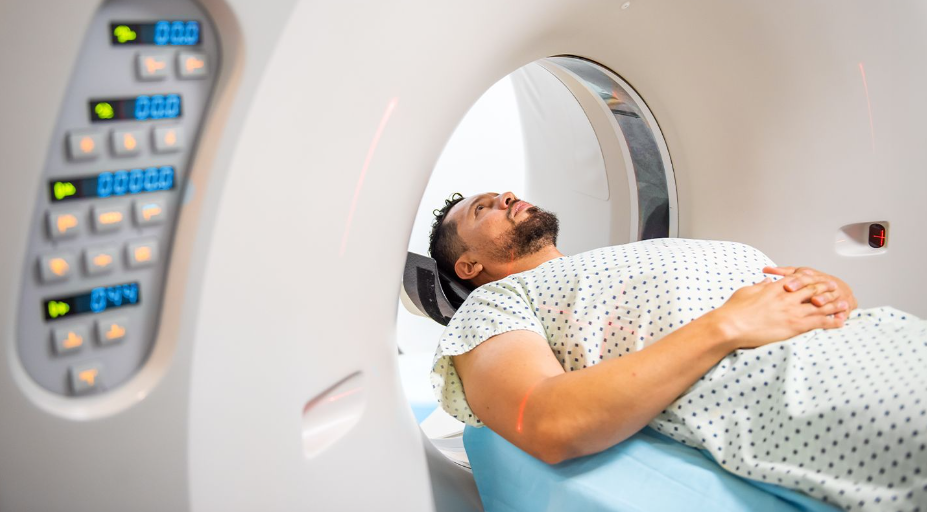X 世代和千禧一代的癌症风险高于老一代

【中美创新时报2024 年 8 月 2 日编译讯】(记者温友平编译)一项大型新研究表明,与老一代相比,X 世代和千禧一代患某些癌症的风险更高,这种转变可能是由于饮食、生活方式和环境暴露的代际变化造成的。《华盛顿邮报》记者林赛·贝弗(Lindsey Bever)对此作了下述报道。
在周三发表在《柳叶刀公共卫生》杂志上的一项新研究中,美国癌症协会的研究人员报告称,在 34 种最常见的癌症中,有 17 种癌症的发病率在越来越年轻的一代中正在上升。研究结果包括:
风险增加最显著的癌症是肾癌、胰腺癌和小肠癌,千禧一代男性和女性的发病率是婴儿潮一代的两到三倍;
与婴儿潮一代相比,千禧一代女性患肝癌和胆管癌的风险也更高;
虽然患癌症的风险在上升,但对于大多数癌症而言,年轻人死于该疾病的风险保持稳定或下降。但年轻女性的胆囊癌、结直肠癌、睾丸癌、子宫癌以及肝癌的死亡率有所上升。
“这令人担忧,”美国癌症协会监测和健康公平科学部高级副总裁、这项研究的资深作者艾哈迈丁·杰马尔 (Ahmedin Jemal) 说。
如果目前的趋势继续下去,年轻人中癌症和死亡率的上升可能会“阻止甚至逆转我们在过去几十年中在降低癌症死亡率方面取得的进展”,他补充道。
虽然年轻人癌症发病率上升的原因尚不清楚,但研究人员认为可能有几个因素,包括肥胖率上升;不健康饮食(富含饱和脂肪、红肉和超加工食品或使用抗生素)导致的微生物群改变;睡眠不足;久坐的生活方式;以及环境因素,包括接触污染物和致癌化学物质。
研究人员分析了 2000 年至 2019 年期间被诊断患有 34 种癌症的 2350 多万名患者的数据。他们还研究了死亡率数据,其中包括美国 25 至 84 岁人群中 700 万例死于 25 种癌症的病例。
在之前的研究基础上,研究人员发现了八种癌症,这些癌症的发病率随着每一代的增加而增加,在此基础上,研究人员又发现了另外九种癌症,其中一些癌症在老龄化人群中之前曾下降,但在年轻人群中却上升了。
该研究没有考察家庭收入、保险状况、种族或民族等因素。
年轻人,即 50 岁以下的人,在患癌症的总人口中只占少数,“但令人担忧的是,癌症发病率越来越低,因此,随着人口老龄化,发病率的上升引发了非常现实的担忧,”德克萨斯大学 MD 安德森癌症中心副总裁兼癌症预防和人口科学部门负责人 Ernest Hawk 说。
与此同时,研究人员还指出,年轻女性的宫颈癌发病率有所下降,这归因于接种人乳头瘤病毒疫苗。研究人员表示,肺癌、喉癌和食管鳞状细胞癌等与吸烟有关的癌症也有所下降,不过在最年轻的年龄组中,进展有所放缓。
常规筛查检测仅推荐用于四种癌症——结肠癌、宫颈癌、乳腺癌,以及对某些人来说的肺癌——许多处于平均风险的年轻人不符合年龄要求,或者由于各种原因没有接受筛查。一些专家指出,广泛筛查可能带来危害,包括假阳性,这可能会造成心理负担,并导致不必要的后续检查和程序。
“问题在于患者越来越年轻,我们一开始就不总是有很好的筛查,然后我们无法真正筛查如此庞大的人群,”纪念斯隆凯特琳癌症中心年轻发病结直肠癌和胃肠道癌症中心联合主任、胃肠道肿瘤学家 Andrea Cercek 说。
在这项新研究中,几乎所有年龄组的乳腺癌、胆囊癌和其他胆道癌以及子宫癌的发病率都在上升,年轻一代的发病率上升得更快。虽然 40 岁以下女性的乳腺癌发病率仍然很低,但在另一项研究中,乳腺癌仍然占早发癌症病例的最高数量。
最近越来越多的证据表明,越来越多的 40 多岁女性患乳腺癌,这促使美国预防服务工作组去年改变了之前的指导方针,将常规筛查乳房 X 线检查的年龄从 50 岁降低到 40 岁。
然而,乳腺癌肿瘤学家、纽约大学朗格尼健康中心珀尔马特癌症中心副教授伊丽莎白·科曼 (Elizabeth Comen) 表示,常规乳房 X 线摄影对乳房致密的女性效果不佳,而这种情况在年轻女性中更为常见。
科曼表示:“了解如何更好地筛查和检测年轻患者的癌症是一个巨大的未满足需求。”她补充说,她的许多年轻患者自己也发现了乳腺癌。
近年来,结肠直肠癌筛查的推荐年龄也从 50 岁降低到 45 岁,因为研究表明,诊断年龄趋于年轻化。新研究发现,胃癌和结肠直肠癌发病率的上升仅限于年轻人群,这意味着虽然结肠直肠癌发病率总体上在下降,但年轻人群的发病率有所上升。
但许多符合条件的人并没有接受结肠直肠癌筛查。 2021 年的一项研究报告显示,在 1900 万符合条件的 45 至 49 岁成年人中,只有不到 400 万人接受了最新的筛查,这些筛查包括新批准的血液检查、粪便检查或结肠镜检查或 CT 结肠造影等视觉检查。
题图:如今,有色人种在美国人口中所占的比例比一个世纪前要大得多,而且他们患癌症的风险可能更高。Getty Images
附原英文报道:
Gen X and millennials at higher cancer risk than older generations
By Lindsey Bever Washington Post,Updated August 1, 2024
Generation X and millennials are at an increased risk of developing certain cancers compared with older generations, a shift that is probably due to generational changes in diet, lifestyle, and environmental exposures, a large new study suggests.
In a new study published Wednesday in the Lancet Public Health journal, researchers from the American Cancer Society reported that cancer rates for 17 of the 34 most common cancers are increasing in progressively younger generations. The findings included:
Cancers with the most significant increased risk are kidney, pancreatic, and small intestine, which are two to three times as high for millennial men and women as baby boomers.
Millennial women also are at higher risk of liver and bile duct cancers compared with baby boomers.
Although the risk of getting cancer is rising, for most cancers, the risk of dying of the disease stabilized or declined among younger people. But mortality rates increased for gallbladder, colorectal, testicular, and uterine cancers, as well as for liver cancer among younger women.
“It is a concern,” said Ahmedin Jemal, senior vice president of the American Cancer Society’s surveillance and health equity science department, who was the senior author of the study.
If the current trend continues, the increased cancer and mortality rates among younger people may “halt or even reverse the progress that we have made in reducing cancer mortality over the past several decades,” he added.
While there is no clear explanation for the increased cancer rates among younger people, the researchers suggest that there may be several contributing factors, including rising obesity rates; altered microbiomes from unhealthy diets high in saturated fats, red meat, and ultra-processed foods or antibiotic use; poor sleep; sedentary lifestyles; and environmental factors, including exposure to pollutants and carcinogenic chemicals.
Researchers analyzed data from more than 23.5 million patients who had been diagnosed with 34 types of cancer from 2000 to 2019. They also studied mortality data that included 7 million deaths from 25 types of cancer among people ages 25 to 84 in the United States.
Expanding on their previous research, which had identified eight types of cancer in which incidence rates increased with each successive generation, the researchers have found an additional nine, including some that had previously declined among older birth cohorts before rising in younger populations.
The study did not examine factors including household income, insurance status, race, or ethnicity.
Younger people, or those under 50, represent a minority of the overall population of those who develop cancer, “but the concern is that cancer is occurring at younger and younger ages, so this increased incidence raises very real concerns as that population continues to age,” said Ernest Hawk, vice president and head of the division of cancer prevention and population sciences at the University of Texas MD Anderson Cancer Center.
At the same time, the researchers also noted that there has been a drop in cervical cancer rates among younger women, which they attribute to vaccination against the human papillomavirus. Smoking-related cancers such as lung, larynx, and esophageal squamous cell carcinoma also declined, though progress has slowed among the youngest age groups, the researchers said.
Routine screening tests are recommended for only four cancers — colon, cervical, breast, and, for some people, lung — and a number of younger people who are at average risk do not meet the age requirements or, for various reasons, are not getting screened. Some experts have pointed to potential harms from widespread screening, including false positives that may take a psychological toll and lead to unnecessary follow-up tests and procedures.
“The problem becomes that patients are getting younger and younger, we don’t always have good screening to begin with, and then we can’t really screen such large populations,” said Andrea Cercek, a gastrointestinal oncologist and co-director of the Center for Young Onset Colorectal and Gastrointestinal Cancers at Memorial Sloan Kettering Cancer Center.
In the new study, breast, gallbladder and other biliary cancers, and uterine cancer rates increased across almost all age groups, rising faster among younger generations. While breast cancer rates among women younger than 40 remain low, in a separate study, breast cancer still accounted for the highest number of early-onset cancer cases.
Recent and growing evidence showing that more women in their 40s are getting breast cancer prompted the US Preventive Services Task Force last year to change its previous guidance, lowering the age for routine screening mammograms from age 50 to 40.
Routine mammograms are not as effective for women with dense breasts, however, which is more common among those who are younger, said Elizabeth Comen, a breast cancer oncologist and associate professor at New York University Langone Health’s Perlmutter Cancer Center.
“Understanding how we can better screen and detect cancers in younger patients is a massive unmet need,” said Comen, who added that many of her younger patients find their own breast cancer.
In recent years, the recommended age for colorectal cancer screening was also lowered, from age 50 to 45, as research has shown a trend toward diagnoses at younger ages. The new study found that increases in stomach and colorectal cancer rates were confined to younger age groups, meaning that while colorectal cancer rates are declining overall, there is a rise in incidence in younger populations.
But many people who are eligible are not getting colorectal cancer screenings. A 2021 study reported that fewer than 4 million of the eligible 19 million adults ages 45 to 49 years were up-to-date on screenings, which can include a newly approved blood test, a stool test, or a visual test such as a colonoscopy or CT colonography.

